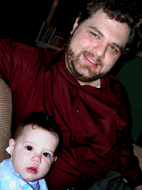I’m at OSCON, and going to try to blog regularly about the sessions that I found interesting. Monday afternoon I went to a tutorial led by Kaliya Hamlin about organizing face-to-face meetings in open source communities, especially “open space” conferences.
I must admit I was skeptical when I went to the meeting: it sounded like a very “warm and fuzzy” topic, and I thought I was unlikely to get specific techniques to improve communication. I was quite wrong! The tutorial was very interesting and thought-provoking. I learned a lot more about the techniques of organizing “open space” conferences; previously I had only been exposed to open space as a scheduling technique for Mozilla all-hands meetings. Particularly important is the invitation phase of the meeting, which fundamentally shapes the attendance and scope of discussion.
What was even more interesting, though, were the communication techniques in the second half of the tutorial that the entire group used to talk about communication. (A rather mind-bending arrangement, but it worked!) I was especially impressed by “the fishbowl”, a technique of arranging space for a group meeting where a large group of people is able to discuss a (potentially controversial) issue without constant interruption, and without allowing the people with the loudest voice or most dominating personality to control the discussion:
- Have the participants arrange the chairs in the room in concentric circles. The “inner ring” consists of 6 (or so) chairs; the next ring perhaps 12, and the remaining “cloud” of people around the edges.
- Select 5 people (or ask for volunteers) to begin the discussion; there is one empty chair in the inner ring. Everyone else finds a seat in the outer rings.
- Only people who are in the inner ring are allowed to talk. If somebody on the “outside” feels a strong need to talk, they take the empty seat in the inner ring. One of the other people in the inner ring then stands up to leave (so that there is always an empty chair).
- Occasionally, the moderator of the discussion may choose to invert the relationships; the inner ring goes silent, and the members of the second ring are asked to voice their thoughts/opinions.
There were other techniques, such as creating a human spectrograph of opinion along a line on the floor, that were good too (though less interesting to me). I know that this was Kaliya’s first time doing a tutorial like this, but I’d encourage others to attend a workshop if/when she does one in the future.
Update: need to investigate Appreciative Inquiry as a large-scale community building technique.

